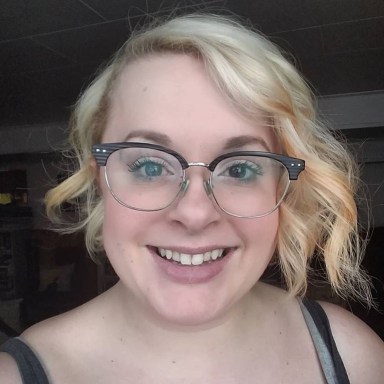‘Joy Ride’ (2001): Deep Dive And Behind-The-Scenes Trivia Of This Scary Road Trip Horror Movie
An in-depth look at this road trip horror movie, including an all-star cast and a creepy voice from a CB radio.
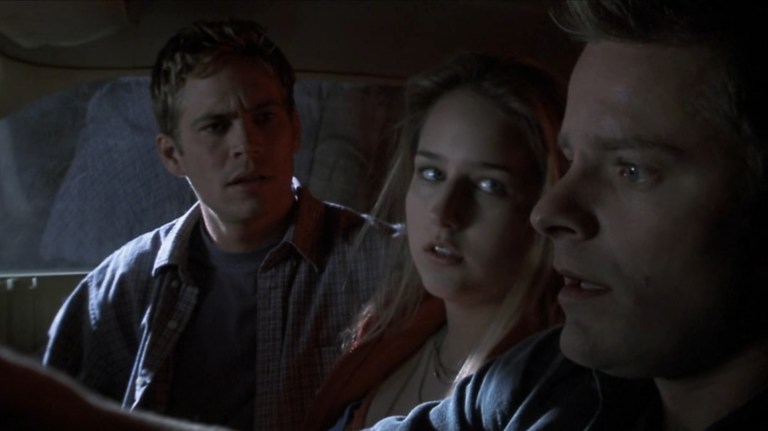
Lewis just wants to drive home from college for summer break in his cool car and pick up his crush, Venna, along the way. Unfortunately, his delinquent big brother Fuller has to tag along, and he insists on installing a CB radio in the car to talk to nearby truckers. What starts out as a harmless prank–tricking a trucker into believing he’ll meet a beautiful woman named Candy Cane at a motel–turns deadly when the subject of their prank seeks revenge.

Joy Ride (2001) gave the horror world classic lines and scenes that have stuck with fans over two decades later. From the vengeful trucker Rusty Nail’s haunting voice saying “Candy Cane” to a love for Steve Zahn’s brand of comic relief in an otherwise terrifying road trip horror movie, the film is jam-packed. The movie is filled with casting gems like Paul Walker and Leelee Sobieski, features a wide arrange of alternate endings, and has an icon for the voice of Rusty Nail. Read on for a deep dive behind the scenes of the making of Joy Ride.
Be warned: There are major spoilers ahead.
The Cast and Crew of Joy Ride
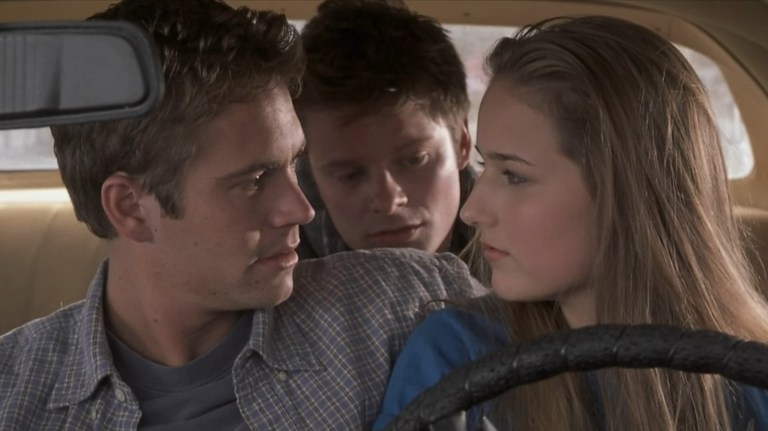
Every film starts with a script. Joy Ride was written by creative duo Clay Tarver and J.J. Abrams. While this was the first script Tarver had produced, he would later go on to write several episodes of Silicon Valley (2014-2019). Abrams wrote Joy Ride before his career-defining projects like Lost (2004-2010), Cloverfield (2008), and the recent Star Trek films.
Though director John Dahl started his career in films, he’s spent the decades since Joy Ride directing hit TV series like Yellowstone (2018-) and Evil (2019-).
Three main characters comprise the core cast of Joy Ride: brothers Lewis and Fuller, and Venna as the object of both of their affection. Since the bulk of the film takes place in Lewis’s car, casting for these three characters was crucial.
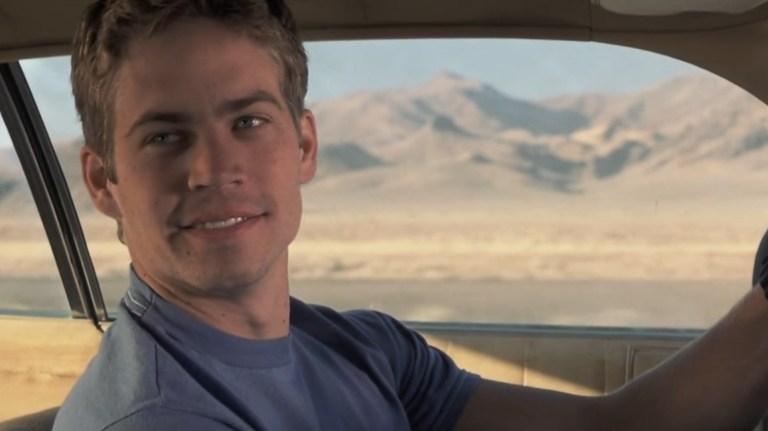
For Lewis, production needed an actor who could play off the sweet college guy with a crush while also being a believable muscle car driver. While they had several actors in mind, including Tobey Maguire, they ultimately went with the late Paul Walker. At the time of filming in 1999, Walker had been best known for his roles in teen flicks like Varsity Blues (1999) and She’s All That (1999). He would eventually become most well known for his role in six of the Fast and Furious films, the first of which came out in 2001, the same year as Joy Ride.
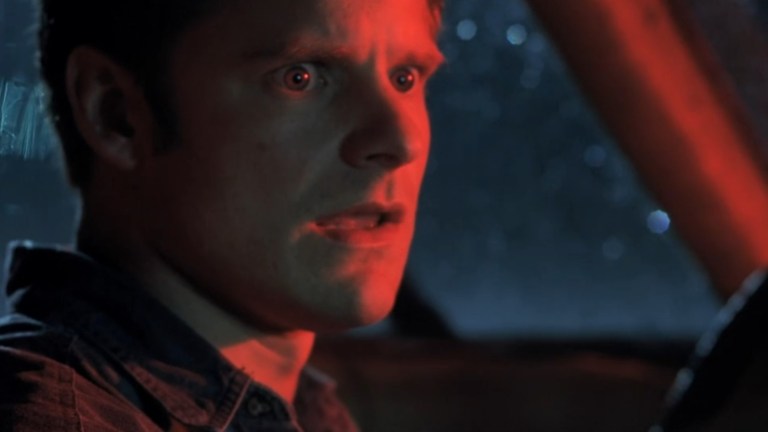
The role of Lewis’s brother Fuller had to go to someone who could convincingly play both a delinquent and a bit of comic relief. Steve Zahn nabbed the role, adding Joy Ride onto his long list of movies where he plays the funny guy. This includes That Thing You Do (1996), You’ve Got Mail (1998), and Sahara (2005).
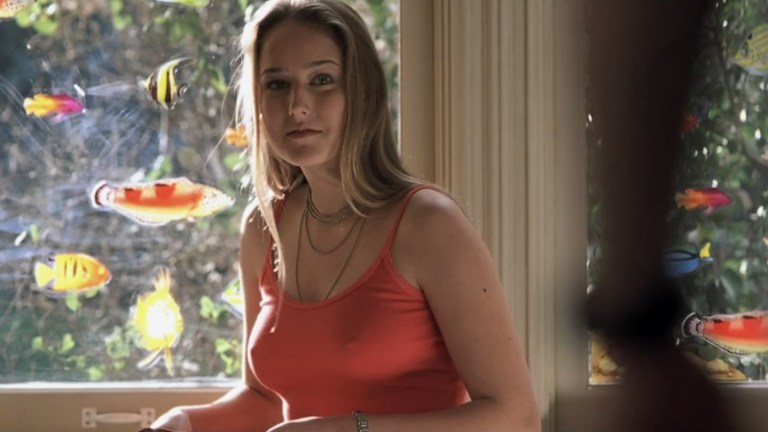
Leelee Sobieski rounds out the main cast as Venna. While she joins the brothers halfway through the film’s runtime, her presence marks the acceleration for antagonist Rusty Nail’s revenge. Only 17-18 during filming, Sobieski already had roles in Deep Impact (1998) and Never Been Kissed (1999). Though she’s had a few roles here and there in the last two decades, she mostly steers clear of the spotlight and has focused her attention on her art career, which you can see on her Instagram.
Aside from the core three main characters, the most important character is the vengeful trucker, Rusty Nail. Two people were hired to fill the role: One for the on-camera personality that pops up at the end of the film, and one for the iconic voice heard over the CB radio. Although both roles went uncredited, Matthew Kimbrough played the on-camera Rusty Nail. This character actor has had a wide range of small roles in film and television since the 1980s.
The role of the voice of Rusty Nail was much more difficult to fill, but if you listen closely you might recognize the man behind this iconic voice.
The Man Behind the Voice of ‘Rusty Nail’

For many fans it’s the haunting gravely voice of Rusty Nail calling for Candy Cane over the CB radio that’s made this movie so memorable. We cower in fear and revulsion right along with Lewis, Fuller, and Venna. The voice makes or breaks the film, which is why finding their official Rusty Nail was difficult for production.
While filming, someone on-set would provide the voice for the movie’s killer so the rest of the cast had someone to play their scenes off of. It wasn’t until post-production that they finally found the right person to voice the role: Ted Levine. If you’re not familiar with the name, you’ll definitely be familiar with his other roles.

Ted Levine is most well-known for his role as serial killer Buffalo Bill in The Silence of the Lambs (1991). He uses a similarly haunting voice for this role as he tells a captured woman, “it rubs the lotion on its skin, or else it gets the hose again.” Perhaps it’s the subconscious memory of this role that makes Rusty Nail’s drawl so extra terrifying.
Film and TV fans will also recognize Levine from Monk (2002-2009), Shutter Island (2010), and Big Sky (2020-), among many other roles.
Four Alternate Endings
In the theatrical ending of the film, the police find a dead body in the driver’s seat of Rusty Nail’s truck, assuming that it’s the man himself. But just as Venna and the Thomas brothers slowly start to relax, they hear Rusty Nail’s voice over the CB radio of the ambulance. The killer got away, and the survivors will never again feel safe.
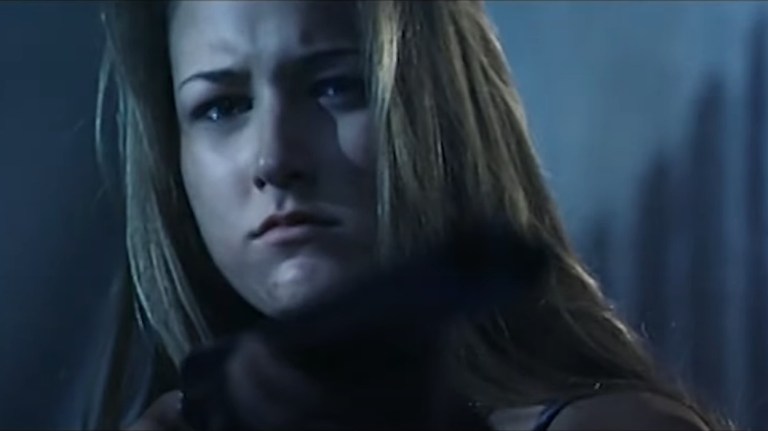
That’s not the only ending they filmed, though. In the end, they had four alternate endings, which can be found on some DVD and Blu-ray releases of the movie:
- Lewis breaks a board that holds the truck up, thus making it come crashing down on top of Rusty Nail, killing him.
- Venna breaks herself out of her bonds, grabs the shotgun that was set up to kill her, and uses it to shoot Rusty Nail instead.
- Rusty Nail ends up inside the hotel room and is pushed in the way of the shotgun as the cops enter, triggering it to shoot him.
- During the corn field scene, rather than jumping to the motel, Rusty Nail ends up chasing Lewis in his truck before ramming a tank and exploding. The trio then watch Rusty Nail die in the hospital form his burn wounds before the final credits roll.
Interestingly, none of the alternate endings had Rusty Nail surviving the ending of the movie. Only the theatrical ending kept him alive and left the film open-ended for eventual sequels.
More Behind-the-Scenes Trivia for Joy Ride

1. The original working title for Joy Ride was Squelch. Other contenders for the final title included Candy Cane and Highway Horror.
2. It was renamed Road Kill in the UK and Roadkill in Australia because of the negative connotations of “joy rides” as stealing cars rather than fun roadtrips.
3. Most of the film takes place inside Lewis’s car: a 1971 Chrysler Newport.
4. Rusty Nail’s kill count: 2. He killed the ice truck driver, using his body as a decoy at the end of the film, and the night manager at the final motel. Although he ripped the jaw off the man in room 17 and left him for dead, it appears he survived in the official ending of the movie.
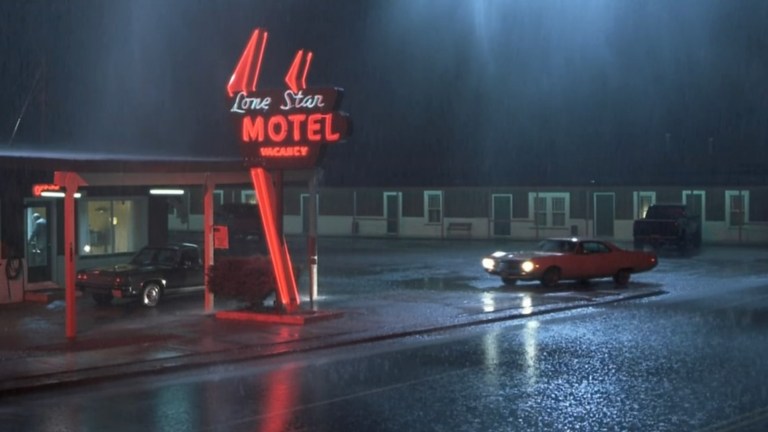
5. Though considered an expansive road trip movie, Joy Ride was filmed in only California, Nevada, and Utah.
6. In an alternative ending that included Rusty Nail’s semi exploding, you can see a water tower in the background. Production spent $100,000 on the tower with plans for it to break and pour water on his truck, but they ran out of time to actually film that aspect of the scene. With that ending not even being used, it was a sunk cost that never came to fruition.
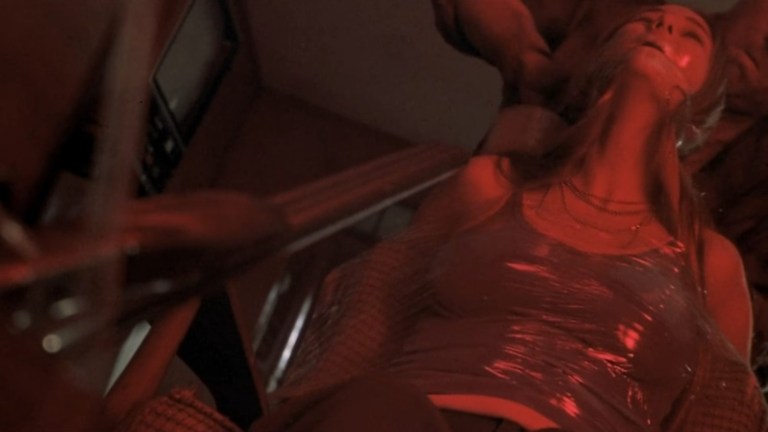
7. No need to worry about the tape wrapped around Leelee Sobieski’s head and wrists in the final scene. Production used cling film instead so there wouldn’t be any adhesive to pull on her hair and skin.
8. Filming took much longer for Joy Ride than is typical for movies. Filming began in 1999 and was finished in 2001. With extensive reshoots and alternate endings, the span of filming took two years, when filming is normally finished in weeks or a few months at most.
9. Joy Ride had a budget of $23 million and earned $36.6 million at the box office.
10. Though it’s box office profit wasn’t large, Joy Ride was still a favorite for both critics and fans. It has a Rotten Tomatoes rating of 74% and an audience score of 66%.
11. The cult success of Joy Ride spawned two sequels: Joy Ride 2: Dead Ahead (2008) and Joy Ride 3: Road Kill (2014), both of which were direct-to-video releases that featured none of the original cast.
